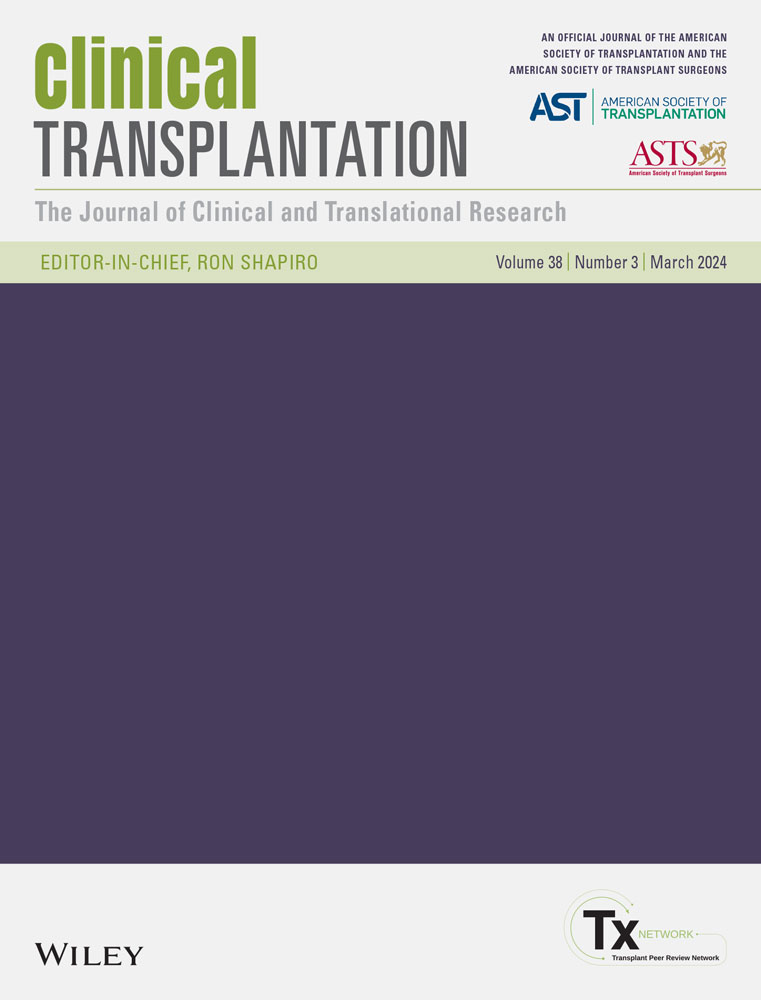Utility of a fusion protein T-cell co-stimulation blocker Belatacept in heart transplant recipients: Real world experience from a high volume center
Daniel Oren and Matan Uriel contributed equally to this work.
Abstract
Background
Belatacept (BTC), a fusion protein, selectively inhibits T-cell co-stimulation by binding to the CD80 and CD86 receptors on antigen-presenting cells (APCs) and has been used as immunosuppression in adult renal transplant recipients. However, data regarding its use in heart transplant (HT) recipients are limited. This retrospective cohort study aimed to delineate BTC's application in HT, focusing on efficacy, safety, and associated complications at a high-volume HT center.
Methods
A retrospective cohort study was conducted of patients who underwent HT between January 2017 and December 2021 and subsequently received BTC as part of their immunosuppressive regimen. Twenty-one HT recipients were identified. Baseline characteristics, history of rejection, and indication for BTC use were collected. Outcomes included renal function, graft function, allograft rejection and mortality. Follow-up data were collected through December 2023.
Results
Among 776 patients monitored from January 2017 to December 2021 21 (2.7%) received BTC treatment. Average age at transplantation was 53 years (± 12 years), and 38% were women. BTC administration began, on average, 689 [483, 1830] days post-HT. The primary indications for BTC were elevated pre-formed donor-specific antibodies in highly sensitized patients (66.6%) and renal sparing (23.8%), in conjunction with reduced calcineurin inhibitor dosage. Only one (4.8%) patient encountered rejection within a year of starting BTC. Graft function by echocardiography remained stable at 6 and 12 months posttreatment. An improvement was observed in serum creatinine levels (76.2% of patients), decreasing from a median of 1.58 to 1.45 (IQR [1.0–2.1] to [1.1–1.9]) over 12 months (p = .054). eGFR improved at 3 and 6 months compared with 3 months pre- BTC levels; however, this was not statistically significant (p = .24). Treatment discontinuation occurred in seven patients (33.3%) of whom four (19%) were switched back to full dose CNI. Infections occurred in 11 patients (52.4%), leading to BTC discontinuation in 4 patients (19%).
Conclusion
In this cohort, BTC therapy was used as alternative immunosuppression for management of highly sensitized patients or for renal sparing. BTC therapy when combined with CNI dose reduction resulted in stabilization in renal function as measured through renal surrogate markers, which did not, however, reach statistical significance. Patients on BTC maintained a low rejection rate and preserved graft function. Infections were common during BTC therapy and were associated with medication pause/discontinuation in 19% of patients. Further randomized studies are needed to assess the efficacy and safety of BTC in HT recipients.
CONFLICT OF INTEREST STATEMENT
Dr. DeFilippis serves on a clinical trial committee for Abiomed. Dr. Uriel is on the medical advisory board for Abbott, ABIOMED and Leviticus. Dr. Sayer has been a consultant for Abbott, Dr. Clerkin receives NIH grant support K23 HL148528 and Dr. Topkara receives NIH grant support (HL146964). All other authors report no financial contributions or conflicts of interest.
Open Research
DATA AVAILABILITY STATEMENT
The data that support the findings of this study are available on request from the corresponding author. The data are not publicly available due to privacy or ethical restrictions.




